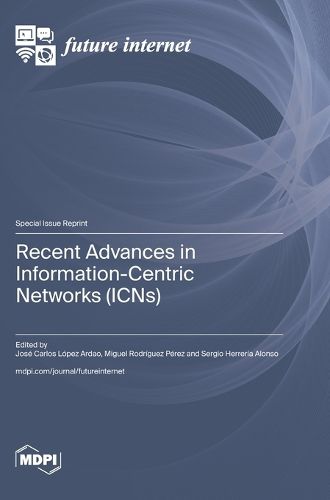Readings Newsletter
Become a Readings Member to make your shopping experience even easier.
Sign in or sign up for free!
You’re not far away from qualifying for FREE standard shipping within Australia
You’ve qualified for FREE standard shipping within Australia
The cart is loading…






The Internet's great success has been essentially based on the simplicity and versatility of its TCP/IP architecture, as it imposes almost no restrictions on either the underlying network technology or the data being transmitted. In essence, applications built on top of TCP/IP get a point-to-point channel that can be used to transmit arbitrary information. This approach has served quite satisfactorily for many years, but it is no longer well suited to some of the new communication paradigms now being used on the Internet. Nowadays, most applications running on top of the Internet are no longer interested in using a point-to-point channel to exchange traffic between two endpoints. In contrast, what they want is to obtain some piece of information that is available in the network somewhere. The current use of load balancers and cache overlay networks is an interim solution to address this mismatch between the network communication model and the needs of applications, but such a solution suffers from significant shortcomings. Information-centric networks (ICNs), particularly Named Data Networking (NDN) and CCNx, offer a service where users can directly obtain information, regardless of location. This service suits current network uses and can provide the traditional point-to-point communication service if desired. This Special Issue highlights and presents recent advances in different problems related to using information-centric network architecture.
$9.00 standard shipping within Australia
FREE standard shipping within Australia for orders over $100.00
Express & International shipping calculated at checkout
The Internet's great success has been essentially based on the simplicity and versatility of its TCP/IP architecture, as it imposes almost no restrictions on either the underlying network technology or the data being transmitted. In essence, applications built on top of TCP/IP get a point-to-point channel that can be used to transmit arbitrary information. This approach has served quite satisfactorily for many years, but it is no longer well suited to some of the new communication paradigms now being used on the Internet. Nowadays, most applications running on top of the Internet are no longer interested in using a point-to-point channel to exchange traffic between two endpoints. In contrast, what they want is to obtain some piece of information that is available in the network somewhere. The current use of load balancers and cache overlay networks is an interim solution to address this mismatch between the network communication model and the needs of applications, but such a solution suffers from significant shortcomings. Information-centric networks (ICNs), particularly Named Data Networking (NDN) and CCNx, offer a service where users can directly obtain information, regardless of location. This service suits current network uses and can provide the traditional point-to-point communication service if desired. This Special Issue highlights and presents recent advances in different problems related to using information-centric network architecture.